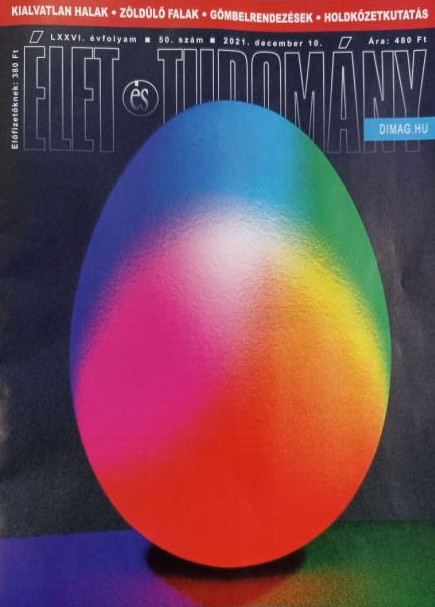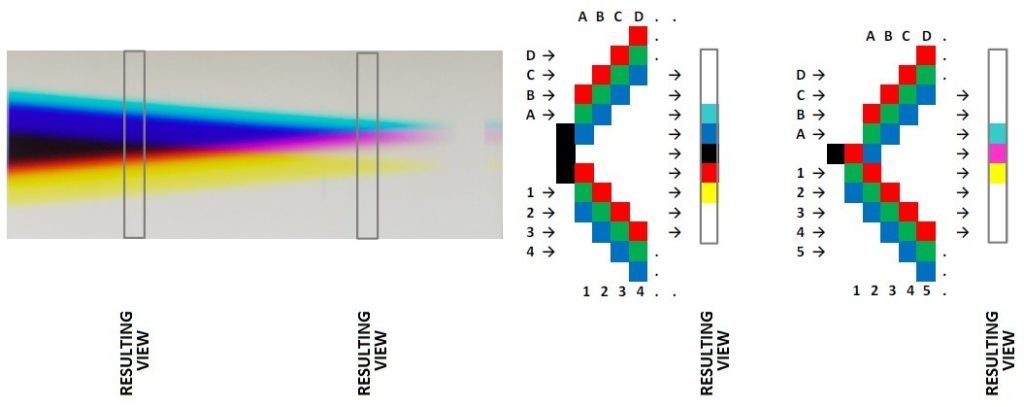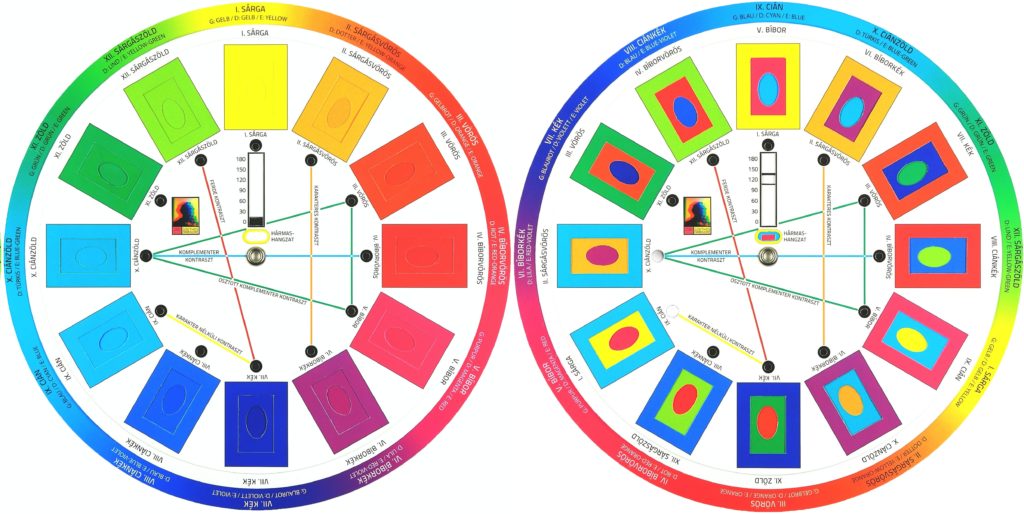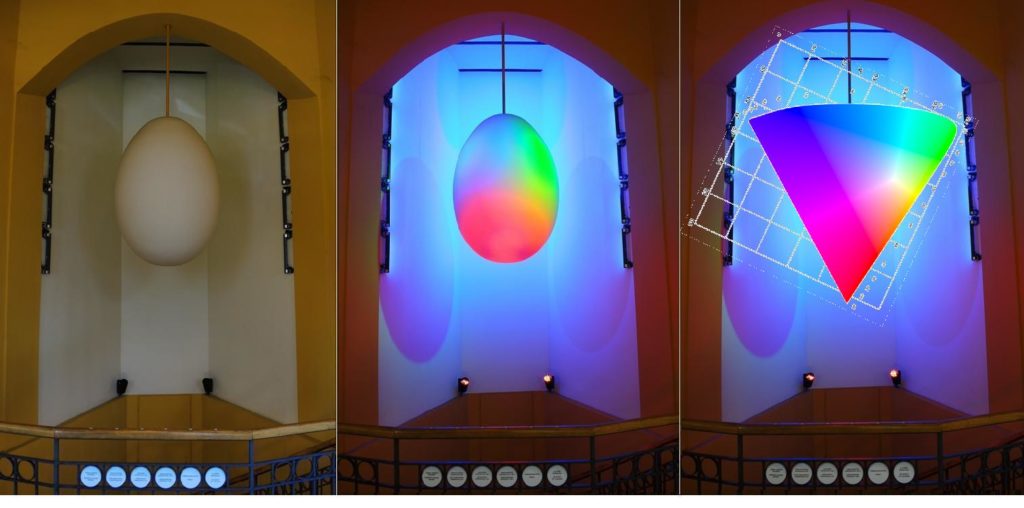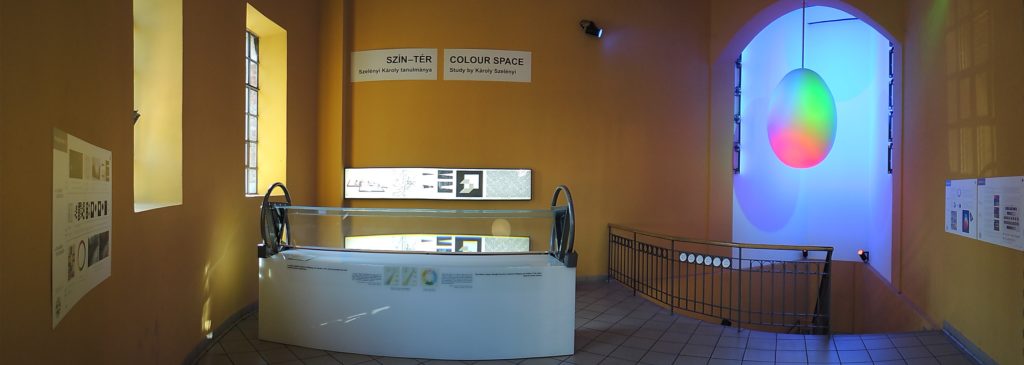In 2015, global events were organized to celebrate the International Year of Light, aiming to emphasize the significance of light and its associated technologies in our daily lives. In Budapest, the creation of Hungarikum Street in the basement of the Central Market Hall (Nagycsarnok, 1093 Budapest, Vámház krt. 1-3.) coincided with this initiative. Exploring this space allows visitors to appreciate Hungary's noteworthy recent discovery—the Gömböc mathematical shape displayed in corridor showcases. Additionally, the staircase provides an opportunity to familiarize oneself with the wine regions of the country. The Color-Space installation, established as part of the Year of Light, serves the dual purpose of offering aesthetic enjoyment and promoting education and awareness.
Johann Wolfgang von Goethe is a name that is likely familiar to everyone, but not many are aware that his interests extended beyond poetry and prose to include diverse fields such as color theory. The book titled " Színek – A fény tettei és szenvedései. Goethe színtana a mindennapokban" by photographer and visual artist Szelényi Károly predominantly delves into Goethe's exploration of color, illustrating his theoretical concepts through imagery. The previously mentioned Color-Space installation was inspired by this 2010 publication, with architectural design by Gergely Nagy of PANNONTERV and optics-light technology by István G. Szabó of OMI OPTIKA. This creation provides an opportunity to familiarize ourselves with the fundamental experiments related to the origins of colors, placing particular emphasis on the psychophysical phenomenon of additive color mixing occurring within our eyes.
The foundation of the system involves projecting the three primary colors (R – red, G – green, B – blue) onto each other or displaying them quickly or within a specific distance to create the shades perceived by our eyes. In our article, we explain the structure and functioning of the installation. We offer a straightforward, easy-to-understand, and visually descriptive explanation of what occurs along the black-and-white boundary when observing a color-splitting water prism. This can be valuable for instructing the principles of primary and complementary colors, as well as the principles of additive color mixing. The installation, utilizing a distinctive and innovative three-layer rotatable color wheel, has the capability to showcase the dynamic sequence of crucial color contrasts (60°, 120°, and 180°) over time.
OPTIKA Mérnökiroda kft. designed and installed both the Color-Space installation and the lighting technology, including the LED lighting system for Hungarikum Street. You can find the three-layer rotatable color wheel for sale in our online store.
Johann Wolfgang von Goethe is a name that is likely familiar to everyone, but not many are aware that his interests extended beyond poetry and prose to include diverse fields such as color theory. The book titled " Színek – A fény tettei és szenvedései. Goethe színtana a mindennapokban" by photographer and visual artist Szelényi Károly predominantly delves into Goethe's exploration of color, illustrating his theoretical concepts through imagery. The previously mentioned Color-Space installation was inspired by this 2010 publication, with architectural design by Gergely Nagy of PANNONTERV and optics-light technology by István G. Szabó of OMI OPTIKA. This creation provides an opportunity to familiarize ourselves with the fundamental experiments related to the origins of colors, placing particular emphasis on the psychophysical phenomenon of additive color mixing occurring within our eyes.
The foundation of the system involves projecting the three primary colors (R – red, G – green, B – blue) onto each other or displaying them quickly or within a specific distance to create the shades perceived by our eyes. In our article, we explain the structure and functioning of the installation. We offer a straightforward, easy-to-understand, and visually descriptive explanation of what occurs along the black-and-white boundary when observing a color-splitting water prism. This can be valuable for instructing the principles of primary and complementary colors, as well as the principles of additive color mixing. The installation, utilizing a distinctive and innovative three-layer rotatable color wheel, has the capability to showcase the dynamic sequence of crucial color contrasts (60°, 120°, and 180°) over time.
OPTIKA Mérnökiroda kft. designed and installed both the Color-Space installation and the lighting technology, including the LED lighting system for Hungarikum Street. You can find the three-layer rotatable color wheel for sale in our online store.
